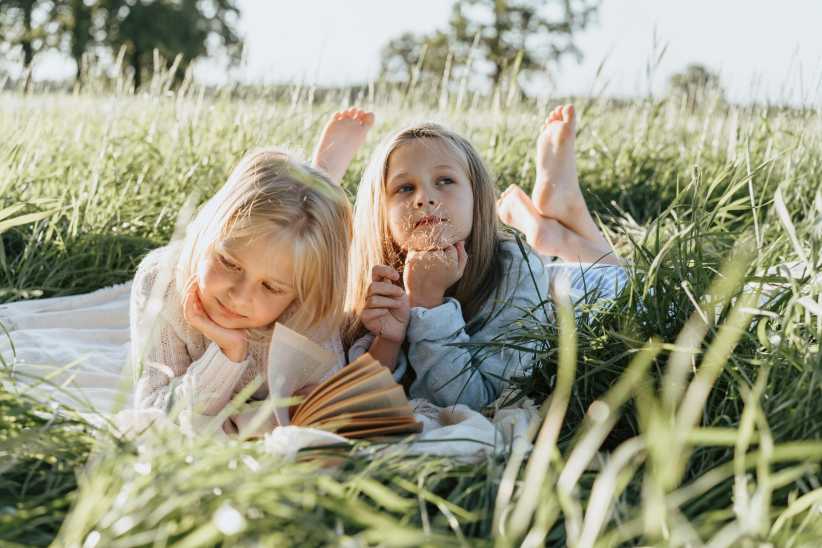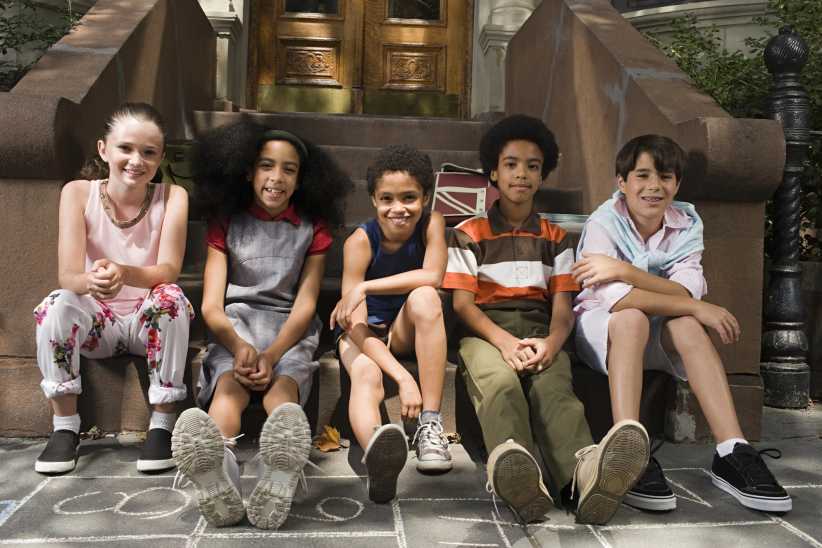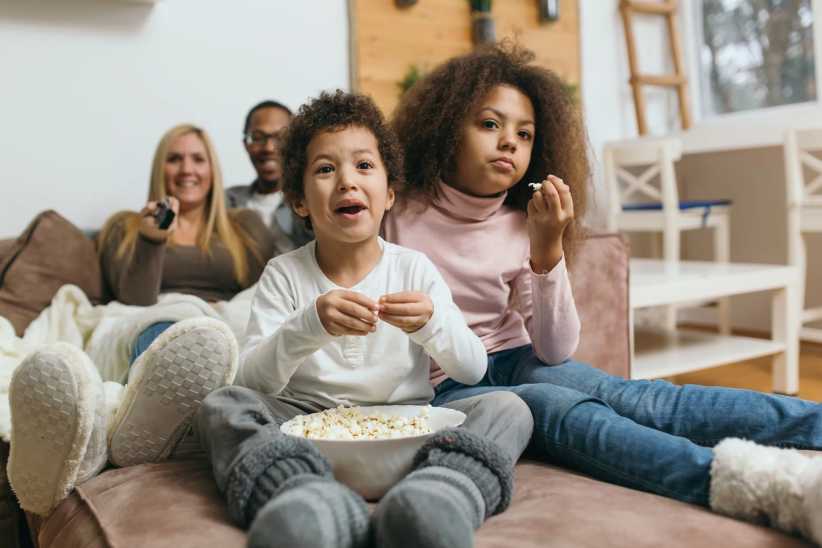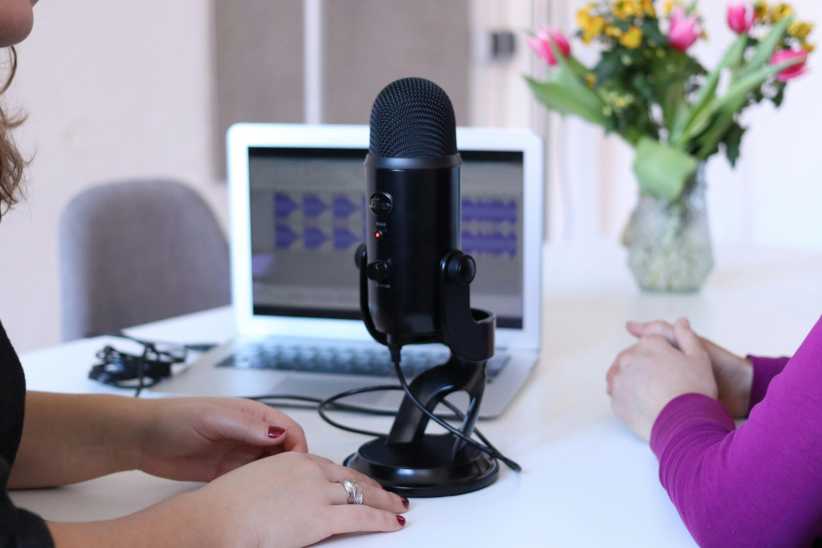 A normal cardboard box—like the kind that UPS delivers—may seem perfectly undistinguished. But in the experience of Jemma Westing, author of the new book Out Of The Box: 25 Cardboard Engineering Projects For Makers from DK, a cardboard box is creativity gold—raw material for inspiring the dreams and diligence of kids who like to make stuff.
A normal cardboard box—like the kind that UPS delivers—may seem perfectly undistinguished. But in the experience of Jemma Westing, author of the new book Out Of The Box: 25 Cardboard Engineering Projects For Makers from DK, a cardboard box is creativity gold—raw material for inspiring the dreams and diligence of kids who like to make stuff.
We chatted with Westing, who is based in England, about Out Of The Box to get the scoop on how cardboard is about to change the game when it comes to playtime at home!
Your book’s title, Out Of The Box, is a wonderful play on words—since cardboard is the book’s basic staple you are alluding to projects that can be made from cardboard. But of course as a vernacular expression, out of the box also suggests a creative and unconventional approach. I think it captures the spirit of your DIY projects perfectly. Is that how you think about them?
Yes, that’s about right. When I run my BrilliantBuilds workshop, it’s all about being as creative as you can be with the materials that you’ve got to hand. Families have to think on the spot and experiment and I worked closely with the DK team to try to make sure that this way of working was captured in the book. Out of the Box is definitely more of a “give it a go and see what happens” book.
Let’s also talk about second part of the headline, 25 Cardboard Engineering Projects For Makers. I think most people would associate the word engineering with building or creating or constructing but maybe with a more hi-tech or scientific toolbox than the one required for your projects (which includes basic arts-and-crafts materials like paint, tape, and scissors). Is the book making the case that the seeds of engineering—and the maker movement as well—begins with the impulse to construct and create even if the projects use low-tech or no-tech materials?
Yes, absolutely. Cardboard is very versatile and can be easily worked and manipulated in the hands. It’s also a very accessible material. I think that most become unconsciously familiar with this material at an early age; the majority of people I’ve met can relate to the classic scenario of the toddler who has been given a present but ignores the toy as they are far more interested in playing with the cardboard box it came in!
If this curiosity with the cardboard box is nurtured, it’s not long before the simple building challenges come: how tall can I make it? How small can I make it? How much weight will it hold? How can I get it from one side of the room to another? Can I make it move? So yes, it’s very easy to start thinking about common engineering problems by starting off with such a basic material. Working with cardboard builds confidence.
You’ve mentioned that the projects were inspired by activities at BrillliantBuilds, a workshop space for young families. Can you elaborate a bit on BrilliantBuilds?
BrilliantBuilds is my not-for-profit cutting and sticking workshop, which I run in my spare time. I take it around the country and pitch up at family-friendly events such as national festivals. I designed it to give families the time and space to be creative together. I run it with a team of volunteers who are either interested in the arts and/or working with children, and we all turn up with recycled cardboard (we also recycle what we find on site at the event) and then invite everybody to come and make something out of the cardboard. We often have a theme—for example “dinosaurs” or “build a city”—to help get people started. Once a few people get started, more people wander in and before I know it, the workshop is running itself. Families start to collaborate and inspire one another, which for me is the best bit.
I have several festival events to go to this year here in the UK and I’m also doing many literary events with DK in both the UK and the US. I plan to be building many things along the way so it’s going to be a very busy, creative year!
As a designer, my BrilliantBuilds workshop allows me to observe how families problem-solve and how they piece their designs together in stages. When it comes to designing a family friendly, step-by-step reference book, these first-hand observations can be invaluable.
[gravityform id=”13″ title=”false” description=”false” ajax=”true”]
Tell us about your background. Do you have formal training in art or engineering, or more of a lifelong interest in children and creativity?
Growing up, I have always liked art and design. Design was my strongest subject at school and I have my parents to thank for that. My mum has an amazing have-a-go attitude and my dad is a qualified engineer and sculptor who has a brilliant technical mind.
When I was younger, I wanted to be an art teacher and did a lot of voluntary work during my A-levels working with young teenagers. I took a gap year to Ecuador where I taught art and English for 3-4 months and had an incredible time out there. On my return I did an Art Foundation year, which made me realize that I wanted a creative, hands-on job. I then did an Illustration degree course for three years and re-discovered my love for making things out of paper and cardboard. I also did a lot of mentoring and ambassador work with the University, meeting a lot of University students (prospective and current), parents of students and youngsters from local schools who took part in our University summer school programs. Getting people involved in creative activity is important to me.
I was quite a reluctant reader when I was younger and reflecting on this during my degree course, I set myself the challenge of finding ways in which I could make reference books engaging and immersive. I relied on my paper engineering skills to answer design problems; I made pop-up books and designed book spreads with moving elements to help explain and demonstrate things. Ultimately, this landed me with a design job in publishing and I’m very lucky to have it.
This book is also such a visual treat! I imagine that most children will engage it by looking at the images and thinking: “I want to try to do that one!” Is that a reasonable starting point? Or do you encourage most kids to begin with some of the easier projects of interest to get used to working with cardboard before taking on more elaborate projects?
The shots of the finished builds in the book are there as both inspiration and incentive. All of the projects are organized by difficulty so that if you don’t feel confident working with cardboard, you can start off with the simpler makes and then try the slightly more challenging ones later on – but you don’t have to! There’s no right or wrong.

How do you see the parent’s role in all this? You make a point at the beginning of the book that parents should supervise as necessary for safety reasons. But what about on participatory side of it? Do you encourage parents to let children work as independently as possible? Or does that really depend on the age and skill-set of the child?
When I run my workshop, I see some parents who sit happily on the sidelines whilst the children beaver away and then there are other parents who almost take over projects and forget that the child is involved all together! I personally prefer the parents to get involved (but still give their children a chance to join in!). The best projects that I’ve seen—judging from the size of the smiles on the maker’s faces—have come from collaborative family efforts.
To be honest, I think most parents take the initiative when it comes to helping a child should they need it. If the scissors are too big to work or the card too thick, parents tend to just do what they need to do.
The book is aimed at children ages 7-12, and DK helped me to shortlisted projects from my initial pot to best reflect this.
I’ve seen some art programs for kids, where the projects were so polished that many parents began to suspect that the art teachers were taking such an active role that maybe the kids weren’t really learning or doing as much as they could or should. But on the other hand, the kids brought home beautiful art projects that they were very proud of. Where should a parent draw a line on their level of involvement?
If you want to help your child and/or your child is asking for your help, I’d recommend a 50/50 involvement all the way. Do the cutting and sticking stage together, and then do the decoration together. If the make is for a school project, take photographs of the various stages and try to include snaps of your child making and decorating. The decoration can be the really fun part but it can also be the part that can make a project look very complicated. For example, my “Pharaoh’s finery” Egyptian-themed headdress looks quite elaborate, but if you forget about the paintwork and just built it, you’ll realize that it’s not that hard to make.
Painting a project and spending time on it can really add to the sense of achievement that the child will feel. It’s even nicer for them if a parent is helping. If they don’t want your help, I’m sure that they’ll let you know!
What are two of your favorite projects in the book?
An easy project and one that is always a success at my workshop events is Cardville city. You can make as many buildings as you like and they don’t have to look the same. Another slightly more challenging favorite would be the Egyptian headdress purely because I love making costumes out of cardboard and you can really take your time over the decoration if you want to.
Finally, let’s come back to the core element of cardboard. Why is that such an appealing material for engineering projects for young makers? Also, please discuss the recycling ethos that does along with all of your projects. That’s a very important aspect of this work too, right?
As I mentioned earlier, little hands get access to cardboard from a very young age. It soon becomes a very familiar material and one that is generally very easy to get hold of. You can fold it, bend it, cut it, slot it, stick it and roll it. The creative possibilities are endless!
Many manufacturers do try to make their cardboard as biodegradable as possible but a lot of it still gets thrown out with the general waste, especially food packaging. It’s down to us to choose what we do with our cardboard waste. By being resourceful with our recycling and repurposing it into something creative as opposed to throwing it away, it’s much better for the environment—something that is very important to take care of.
To learn more, visit dk.com!
Eric Messinger is the editor of New York Family. He can be reached at emessinger@manhattanmedia.com.
Save






















